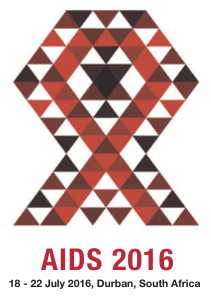Treatment in primary HIV infection is significantly more likely to normalise CD4:CD8 ratio
1 August 2016. Related: Conference reports, Treatment strategies, World AIDS 21 Durban 2016.

Simon Collins, HIV i-Base
Starting ART in primary compared to chronic HIV infection had a significantly higher chance of getting a CD4:CD8 ratio >1.0 in a retrospective study in which individuals were their own controls.
This was a retrospective analysis by Alexander Pasternak from University of Amsterdam and colleagues of 48 people who started a temporary period of ART in primary infection (PHI) – for either 24 or 60 weeks – and who after a median time of 2.4 years off-ART, subsequently restarted treatment again during chronic HIV infection (CHI).
As would be expected, the median CD4 count was higher at baseline for the PHI compared to CHI periods: 505 (IQR: 303 to 713) vs 310 (245 to 418) cells/mm3 respectively (p< 0.0001).
However, there was no difference in the dynamics of CD4 recovery between the PHI and CHI follow-up periods with median CD4 increases of 210 cells/mm3 at week-60 for both groups (although the PHI response reached higher absolute CD4 levels).
Although there were no significant differences between the CD4:CD8 ratio in the PHI vs CHI groups at baseline (0.48 (0.25-0.80) compared to 0.36 (0.25-0.41), respectively; p>0.05), there were significantly different increases in the CD4:CD8 ratio.
By week-12 this ratio increased to 0.95 (0.74 to 1.29) compared to 0.52 (0.41 to 0.74) in the PHI vs CHI periods respectively (p< 0.0001). The differences were sustained to week-48 with 59% compared to 29% of participants achieving a CD4:CD8 ratio > 1.0 (p=0.0049) in the PHI vs CHI periods respectively.
Reference:
Pasternak A et al. Faster restoration of CD4:CD8 ratio during the first 12 weeks of ART initiated at early HIV infection compared with ART initiated at chronic infection in the same patients. AIDS2016. Durban, South Africa. 18-22 July 2016. Poster abstract THPEB033.
http://programme.aids2016.org/Abstract/Abstract/2641 (Abstract)
http://programme.aids2016.org/PAGMaterial/eposters/0_2641.pdf (Poster PDF)

